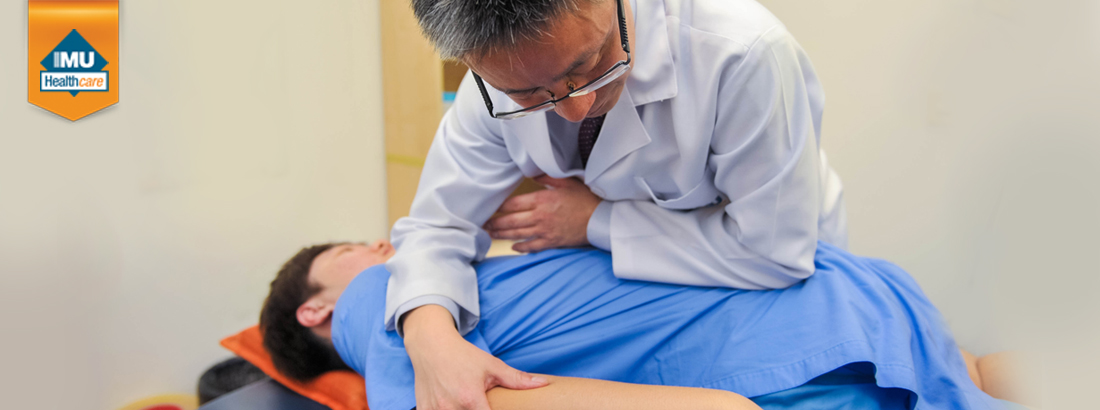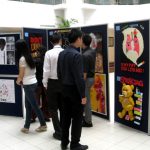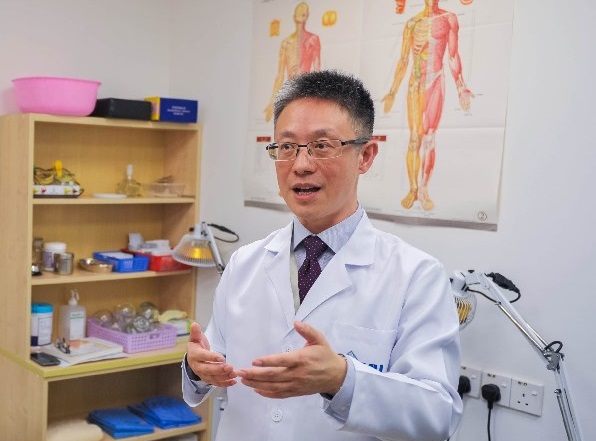 Tui Na massages are the norm for those familiar with Traditional Chinese Medicine (TCM). But for the uninitiated – read most of the general public – many would be wondering what it is all about. Tui Na has been touted as more than just a massage for tremendous health benefits. It is defined as a form of hands-on manipulation technique that operates relatively with the human body’s deep tissue in accordance with the established TCM principles used for more than 2,000 years in China. Professor Lin Xun, senior Chinese medicine physician at IMU Healthcare Chinese Medicine Centre, claims that Tui Na is a suitable treatment for maladies such as joint pains, injury and arthritic conditions. The method is, however unsuitable for pregnant women and for conditions such as bone fractures, ligament tears, and acute spine injuries. The professor walks us through the steps of a Tui Na treatment, emphasising that proper diagnosis is necessary before any treatment can begin. A common misconception is that TCM intervention is immediately required as soon as sports-related injuries happen. Acting accordingly to the principles of basic first aid, ice is needed to reduce internal bleeding while movement would be controlled to avoid further injuries and more swelling. In some cases, an X-ray, MRI or CT scan is needed to rule out bone fractures or torn ligaments and muscles of which Tui Na is unsuitable for.
Tui Na massages are the norm for those familiar with Traditional Chinese Medicine (TCM). But for the uninitiated – read most of the general public – many would be wondering what it is all about. Tui Na has been touted as more than just a massage for tremendous health benefits. It is defined as a form of hands-on manipulation technique that operates relatively with the human body’s deep tissue in accordance with the established TCM principles used for more than 2,000 years in China. Professor Lin Xun, senior Chinese medicine physician at IMU Healthcare Chinese Medicine Centre, claims that Tui Na is a suitable treatment for maladies such as joint pains, injury and arthritic conditions. The method is, however unsuitable for pregnant women and for conditions such as bone fractures, ligament tears, and acute spine injuries. The professor walks us through the steps of a Tui Na treatment, emphasising that proper diagnosis is necessary before any treatment can begin. A common misconception is that TCM intervention is immediately required as soon as sports-related injuries happen. Acting accordingly to the principles of basic first aid, ice is needed to reduce internal bleeding while movement would be controlled to avoid further injuries and more swelling. In some cases, an X-ray, MRI or CT scan is needed to rule out bone fractures or torn ligaments and muscles of which Tui Na is unsuitable for.
After 24 – 48 hours, practitioners will then decide if Tui Na is the appropriate recourse prior to executing any form of treatment, by which it would be conducted in stages.
Following basic treatment procedures the patient will normally be requested to change into a medical robe, and exhibit compliance with the practitioner’s orders. The practitioner will ascertain that the patient is comfortable at all times while practising the treatment. 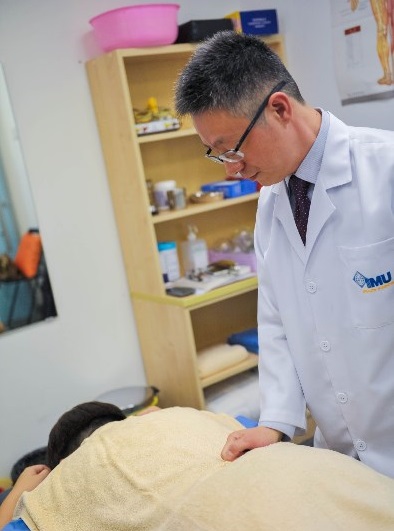
A patient’s lower back being treated by the rolling technique
As Tui Na is a highly-tactile form of treatment, patients undergoing treatment must expect physical contact. A patient may request to be covered if upon feeling uncomfortable. 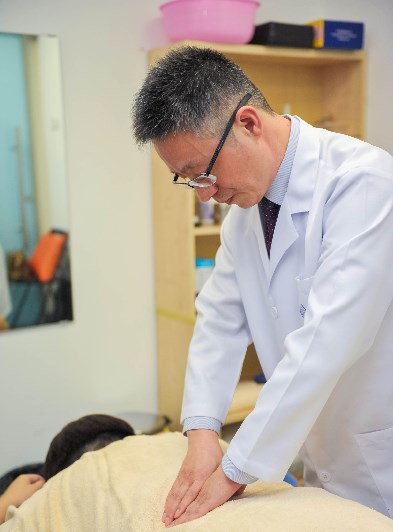
The kneading technique
Throughout a patient’s treatment, there are five important elements a practitioner will use to ensure optimal results. They include force, even application, consistency, gentleness, and depth of penetration. By properly balancing all five aspects, a practitioner is able to avoid damage to the human body while exerting forces into speeding up the patient’s own ability to heal.
The pushing technique after applying topical cream
Pulling the patient
Tui Na techniques are applied to activate and regulate Qi (inner essence) and blood circulation according to the direction of the meridian points in the body. The pushing technique involves powerful strokes in one direction to adjust Qi to achieve a balance of energies throughout the body.
Tui Na is claimed to be well suited for the treatment of many conditions, as among the advantages of Tui Na are to improve the body’s energy and blood circulation, relieve pain and enhance recovery across a wide spectrum of injuries.
By any chance you are interested in experiencing Tui Na, remember first and foremost that it is more than a simple massage.
This article is brought to you by IMU Healthcare.




